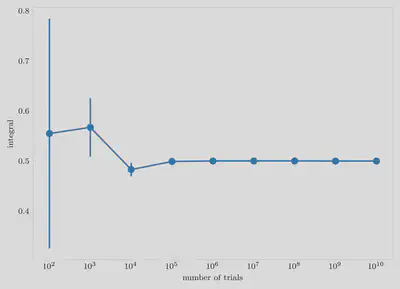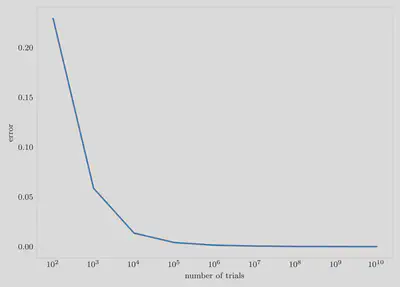Metropolis Monte Carlo is a statistical technique which can be used to evaluate integrals of the following form: $$\int_{-\infty}^\infty P(\vec{x})\,g(\vec{x})\,d\vec{x},$$ where both $P(\vec{x})$ is a probability density $\mathbb{R}^d\to\mathbb{R}^+$ that satisfies $\int_{-\infty}^\infty P(\vec{x})d\vec{x} = 1$, and $g(\vec{x})$ is a function $\mathbb{R}^d\to\mathbb{R}$.
To start with let us implement the MC routine for a 1D case. A new point has to be generated at every step. The maximum amount by which this point can differ from the previous point is input as xmax in the following function.
function MCsingle(P, g, xmax::Float64, nsteps::Int64)
x = rand() - 0.5
gtot = g(x)
p = P(x)
accept = 1
for _ = 1:nsteps - 1
xnew = x + (2rand() - 1) * xmax
pnew = P(xnew)
if pnew / p ≥ rand()
x = xnew
p = pnew
accept += 1
end
gtot += g(x)
end
gtot / nsteps, accept / nsteps
endWrite a function to calculate the error bar by dividing the
nstepsMC steps intonblocksblocks and looking at the standard deviation between the simulations.
Now this function can be used to calculate the value of $\int_{-\infty}^\infty \frac{\exp(-x^2)}{\sqrt{\pi}} x^2 dx$

Extend the 1D MC function to account for multiple dimensions.